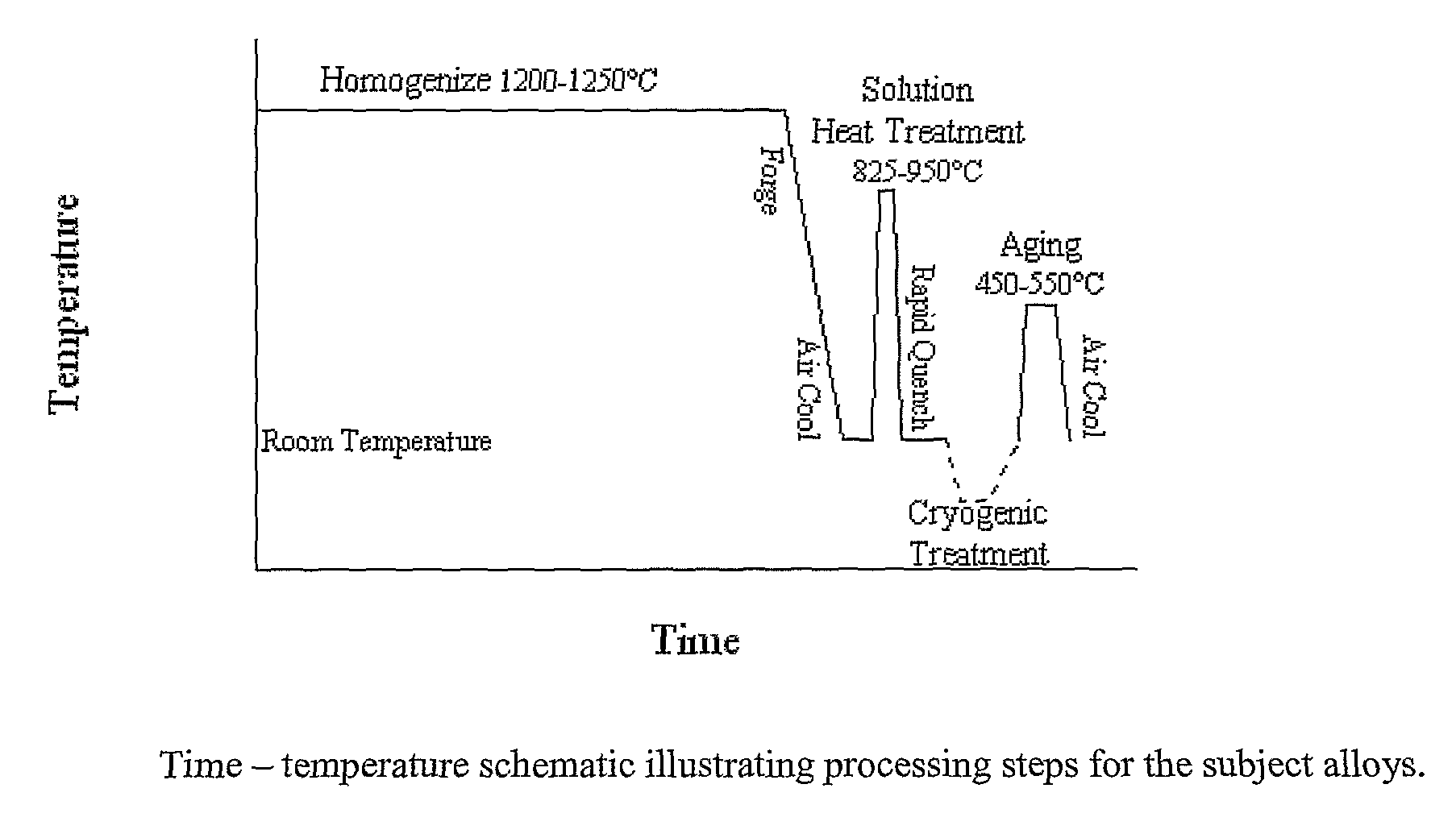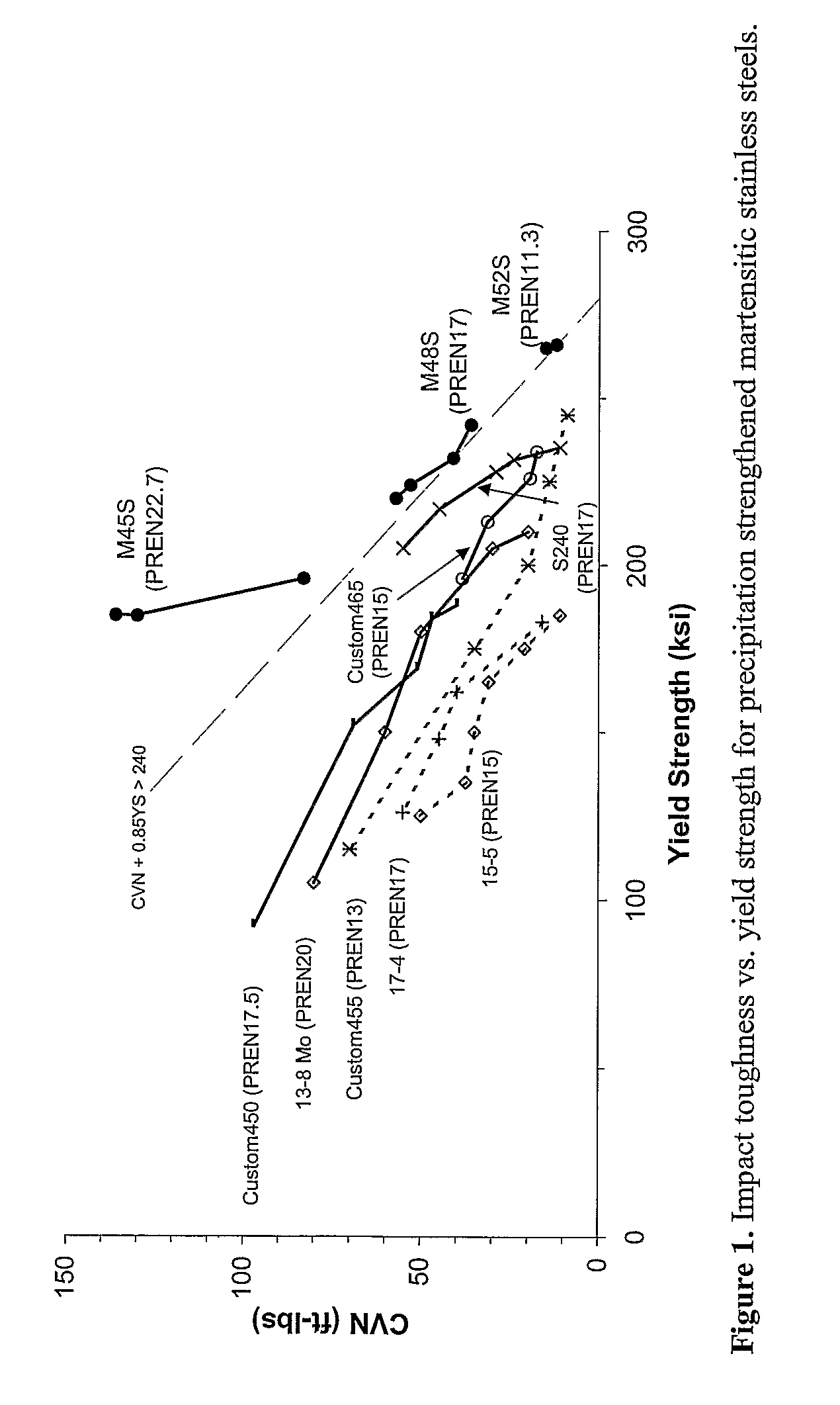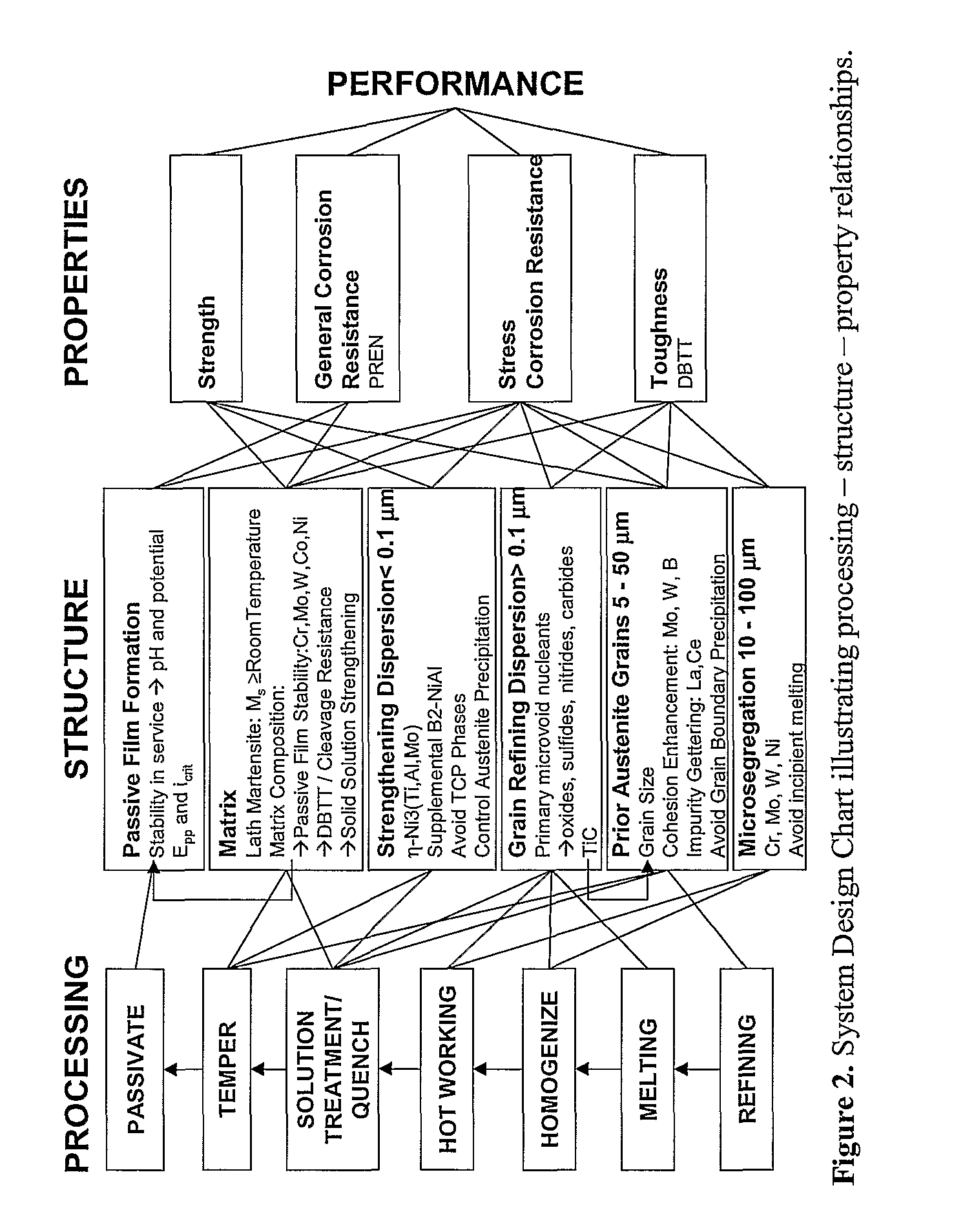Martensitic stainless steel strengthened by Ni3Ti η-phase precipitation
a martensite and precipitation technology, applied in the field of interstitial free chromium, nickel, cobalt, molybdenum, aluminum stainless martensitic steels, can solve the problems of limiting the geometry of wires or blades with thin cross-sections, reducing the start temperature of martensite, etc., and achieves the effect of corrosion resistance of alloys
- Summary
- Abstract
- Description
- Claims
- Application Information
AI Technical Summary
Benefits of technology
Problems solved by technology
Method used
Image
Examples
examples
[0065]
TABLE 4Compositions of experimental alloys tested to date in wt %, with thebalance essentially Fe and incidental elements and impurities.Italicized composition indicates it is outside the preferred compositionrange.AlloyNiCrCoMoTiAlCOtherM52S-1A11.917.749.950.980.710.270.010M52S-1B115.468.877.3900.800.09N / AM52S-2A211.958.1410.4801.110.390.006M52S-2B313870.31.50.4N / AM52S-2C13.458.6713.90.820.570.390.003M52S-2D10.818.849.241.190.570.430.0140.41 VM48S-1A10.2511.857.481.470.560.430.004M48S-1B10.0011.117.511.230.590.570.0040.28 WM48S-2A410.512.47.61.50.60.40.001M45S-1A8.314.34.32.60.490.10.002M45S-2A8.414.34.32.50.470.120.0031Alloy did not transform to martensite due to excessive Ni content2Alloy suffered from hot shortness during forging due to excessive Ti content3Alloy suffered from hot shortness during forging due to excessive Ti content4Alloy had excessive retained austenite due to too much combined Ni and Cr content and insufficient C
[0066]
TABLE 5Yield strength, tensile stren...
PUM
| Property | Measurement | Unit |
|---|---|---|
| CVN toughness | aaaaa | aaaaa |
| volume fraction | aaaaa | aaaaa |
| Ms temperature | aaaaa | aaaaa |
Abstract
Description
Claims
Application Information
 Login to View More
Login to View More - R&D
- Intellectual Property
- Life Sciences
- Materials
- Tech Scout
- Unparalleled Data Quality
- Higher Quality Content
- 60% Fewer Hallucinations
Browse by: Latest US Patents, China's latest patents, Technical Efficacy Thesaurus, Application Domain, Technology Topic, Popular Technical Reports.
© 2025 PatSnap. All rights reserved.Legal|Privacy policy|Modern Slavery Act Transparency Statement|Sitemap|About US| Contact US: help@patsnap.com



